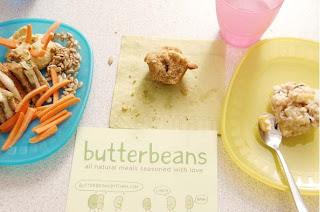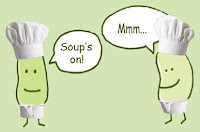Hello! My name is Ben Filippo, and I work for a company called Butter Beans, Inc. Butter Beans, started by two working mothers, provides delicious, healthy, seasonal lunches for students and faculty at independent schools, as well as hands-on cooking classes and a seasonal food and wellness curriculum for students in all schools. Mrs Q. has invited me to share with you a few of my experiences working behind the lunch line and cooking one-on-one with students at Butter Beans.
Behind the line
On a daily basis, I get to see students enjoy wholesome great food and expand their ideas of what’s good. Our menu is full of familiar foods that we all love and have little time generally to make from scratch ourselves (Butter Beans does make everything in house from scratch): meatballs, lasagna, chicken pot pie, mac-n-cheese, enchiladas, etc. We also include “exploration foods” – foods that may be less familiar, which we serve up in small portions to test, before deciding to add them to our official menu rotation.
Kale was one such “exploration food” this season. Kale is one of those vegetables that many adults have a hard time getting excited about. So when kale salad showed up on our menu, I was a bit wary.
At first, the students were very curious as to what it was – some thought it was spinach or lettuce. A few of them knew what it was, but most were hesitant to try this infamous dark leafy green. After the students had gone through the line and were at their tables, we took the kale around the cafeteria to offer a tasting, talking up the accompanying sesame vinaigrette. “It’s a really tasty salad, just with a different sort of green than your typical lettuce or spinach, and we promise, it’s delicious!”
A few students tried it, and low and behold, there was soon a line calling out “kale salad please!” We told them how kale is one of the most nutrient dense foods around (aka, one of the healthiest things you can eat!) as we made our rounds. The kale salad made it’s way on to our regular rotation and is now a favorite amongst students and faculty alike. More recently, sautéed collared greens have also made the cut on our winter menu.
Cooking after school
Teaching kids how to cook healthy meals, and inspiring them to want to eat healthy foods can be a challenge. Many of them want to see how things like hamburgers and french fries are made, so vegetarian options can be a tough sell. This past semester, while teaching after-school cooking classes, I learned a lot about what matters to the students about food. The first thing is that kids want to eat something that sounds tasty, that is the first selling point. Instead of calling our beef kibbe (a Lebanese dish of beef and grains) by its official name, we describe it as “Middle Eastern Meatloaf” and immediately the response improves.
In cooking class, when we made sweet potato fries, the students were not initially excited. “Why can’t we make REAL fries?” they asked. I told them how I make sweet potato fries all the time as a healthy snack (it helps to have good rapport with the studentsJ) and that I knew they would all like them, they just needed to give the sweet potato a chance. I mean, it’s a potato – just sweeter and more colorful! When they finally came out of the oven, they couldn’t get enough of them! “I want to make these at home!” they proclaimed. By the end of the semester, the students had tried all sorts of new vegetables, made pizza sauce, dumplings, lentil burgers and even paneer (Indian Cooking Cheese) from scratch. On the last day of class, I got some big hugs with thanks for showing them how healthy foods can be just as tasty as anything else, especially when they made it themselves!
What’s for lunch on a typical day at Butter Beans?
Chicken fajitas with sautéed peppers, rice and black beans, Mexican pesole (hominy corn soup) with sour cream and pico de gallo, turkey and cheese sandwiches, and the makings for a great salad: mixed salad greens, hummus, pita, olives, shredded cheese, celery, tomatoes and hard boiled eggs and blueberry yogurt.
Want that kale sesame salad recipe – find it on our blog here. We regularly post our cooking class recipes and other asked-about favorites. If you want to learn more about what we do, visit us at http://www.butterbeanskitchen.wordpress.com/ and http://www.butterbeanskitchen.com/.



Sounds delicious! How much do parents pay for a typical Butter Beans school lunch?
Love the story about Kale!! Getting kids interested in nutrient dense foods is one of the most important things we can do as a culture! Not to mention that Kale is an easy to grow veggie in most of the US!!
This morning I just made a quinoa salad with Kale, preserved lemons and feta cheese. I think many of us are looking for more great kale stories. I think many many adults are as surprised as I am by the capacity of kids to understand, appreciate and enjoy healthy food when it is properly prepared.
I am not usually a fan of the guest blogger events, but I thoroughly enjoyed this one- thank you very much, for taking the time to share with us.
I will go puruse your site- I am curious about the hominy corn soup, for one. That sounds amazing.
Anything and anyone that gets kids cooking and trying whole, real foods is a hero in my book. 🙂
Just FYI, that's "lo and behold". Lo means "look".
I love the idea of serving "exploration foods" along with the meal! It sounds like a great way to get kids to try new foods without it being overwhelming: if they don't like it, they won't have to worry about being hungry. Plus not knowing what something is can make trying it scarier, so giving the kids info is great.
While I commend them for trying to introduce the new ingredients to the students, the recipe for the salad dressing is pretty calorie dense (being that it is made with 3/4 cup of oil). Assuming the standard serving size for dressing is 2tbsp, that's over 200 calories for just one serving, not including the kale! If they were prepared in a more healthful way I would be impressed, but saturating a vegetable with oil is not the way to teach kids how to eat. It's parallel to giving a kid french fries; the potato is healthy but once it's cooked with all that oil it becomes a junk food.
2 tbsp of salad dressing?!
I'd argue that teaching the students appropriate portion sizes is part of the mission, and 1 tbsp salad dressing is appropriate for a large salad. For a kid-sized salad, you'd be looking at closer to 1-2 tsp.
I agree about the portion sizes. It's not clear in the recipe how much kale you mix with that amount of dressing, but oily dressings go a long way. I also hate to see people of normal weight who beat themselves or others up for eating healthy fats. Unfortunately, kids are already likely to hear so many bad things about fat, calories, carbs, sodium or whatever the bad nutrient of the year is. I think it's important to teach kids that appropriate portion sizes of foods containing unsaturated fats are an important part of a healthy diet.
I don't think it's productive to be that fat phobic. It seems very 80's in thinking. Dark leafy greens, even with a liberal amount of "good" fats, should be something we encourage kids to consume regularly. If you get too spartan and insist that veggies be served completely ungilded, those greens will be far less likely to capture their tastes, and then you're back to square one.
I do, however, think it's good to avoid hydrogenated fats (and HFCS, while you're at it) as much as humanly possible.
Hey, let them serve this somewhat calorie-dense salad as a "kale gateway drug" haha.
Get 'em hooked now and maybe they'll be more likely to try kale baked, sauteed or steamed in the future. Hitting a KALE salad with a dose of olive or canola oil (in my opinion) doesn't seem half as bad as deep frying starch in a bucket of oil.
Call me crazy, but I really don't think that was the best analogy to use if you're going to gripe about methods used to get kids eating kale.
"kale gateway drug" – LOL!